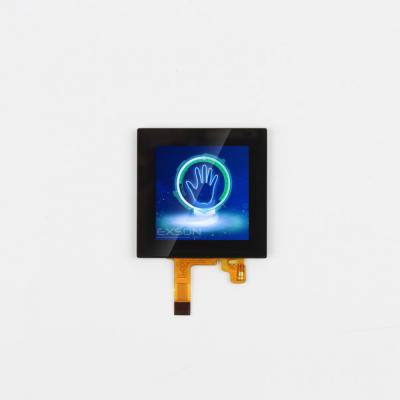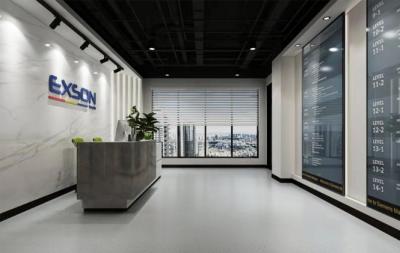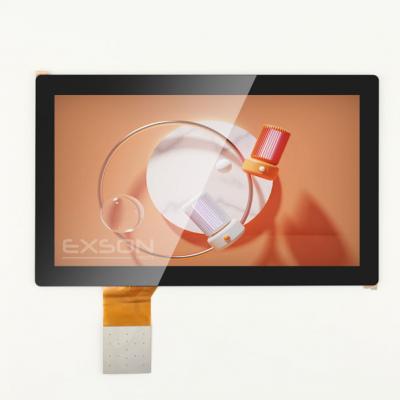Medical LCD displays demand high resolution, usually above 1280*1024, to ensure that doctors can accurately identify and analyze anomalies in images. High-resolution medical LCD displays can provide clearer and more detailed images, helping doctors make more accurate diagnoses. High brightness and high contrast ensure that the images remain clear and visible under various lighting conditions, aiding doctors in making diagnoses in different environments. Medical LCD displays typically have a high degree of color reproduction, accurately presenting the color information in images, which helps doctors assess the condition of lesions.
Medical LCD displays need to have a high degree of stability and reliability to ensure that they won't malfunction or distort images during prolonged use. The application of touch screens replaces traditional button operations in medical devices with an intuitive touch UI interface. Medical TFT displays and medical LCD displays can maximize the functionality and performance of medical equipment.
Exson Tech has specialized in ODM projects for 15 years, providing you with a one-stop service for design, tool customization, touch solutions, bonding, and assembly of display modules for various medical devices.
Waterproof, saltwater-resistant, oil-resistant, and chemical-resistant
Long-term availability
Backward compatibility
PCAP and RTP sensors
TFT and monochrome LCD TFT LCD panels
OLED displays
Integrated components
Custom cover glass with printing, etc.
Aftermarket screen protection film
Medical Imaging Diagnostics
Medical LCD displays are used to display X-rays, CT scans, MRI (Magnetic Resonance Imaging), and other medical images, aiding doctors in detecting fractures, tumors, organ diseases, and more.
Surgery and Treatment
In minimally invasive surgeries, medical LCD displays display images from endoscopes, stent placements, and surgical navigation, assisting doctors in precise operations. In cancer treatment, they are used to plan radiotherapy and monitor chemotherapy outcomes.
Patient Monitoring
Medical LCD displays display patient vital signs data, such as heart rate, blood pressure, and respiratory rate, helping doctors monitor patients' health status in real-time.
Medical Education and Training
In medical schools and training centers, medical LCD displays are used for teaching, showcasing anatomical structures, case analyses, and surgery simulations.
Patient Information Communication
In wards and surgery waiting areas, medical LCD displays provide information to patients and their families, such as surgical progress and patient health status, enhancing patient comfort and family satisfaction.
 Analysis of LCD SPI Screen Flicker PhenomenonMay 26, 2023When we use display devices such as mobile phones, car displays, and home appliances, do we sometimes feel that there are lines scrolling up and down on the screen? Sometimes the screen even flickers?...view
Analysis of LCD SPI Screen Flicker PhenomenonMay 26, 2023When we use display devices such as mobile phones, car displays, and home appliances, do we sometimes feel that there are lines scrolling up and down on the screen? Sometimes the screen even flickers?...view Touch Screen Monitor Maintenance MethodDecember 29, 2021In today's rapid development of technology, professional touch screen monitors provide great convenience for our work and life, but also make people more and more inseparable from it. Now the cost...view
Touch Screen Monitor Maintenance MethodDecember 29, 2021In today's rapid development of technology, professional touch screen monitors provide great convenience for our work and life, but also make people more and more inseparable from it. Now the cost...view High-Quality TFT LCD Display Modules in Interactive LearningDecember 8, 2023In the dynamic landscape of education, the integration of cutting-edge technology has become a catalyst for transformative learning experiences. Among these innovations, high-quality TFT LCD display m...view
High-Quality TFT LCD Display Modules in Interactive LearningDecember 8, 2023In the dynamic landscape of education, the integration of cutting-edge technology has become a catalyst for transformative learning experiences. Among these innovations, high-quality TFT LCD display m...view Reliability Testing of the LCD SPIMay 26, 2023The LCD liquid crystal display screen needs to undergo various types of tests before it leaves our factory, to ensure that our display screens are reliable, stable, and of good quality. As LCD liquid ...view
Reliability Testing of the LCD SPIMay 26, 2023The LCD liquid crystal display screen needs to undergo various types of tests before it leaves our factory, to ensure that our display screens are reliable, stable, and of good quality. As LCD liquid ...view Working Principle of Various Wire-Type Resistive Touch ScreensMarch 31, 2023There are generally two types of touch screens: capacitive touch screens and resistive touch screens. Next, we will introduce the working principle of resistive touch screens.Resistive touch screens c...view
Working Principle of Various Wire-Type Resistive Touch ScreensMarch 31, 2023There are generally two types of touch screens: capacitive touch screens and resistive touch screens. Next, we will introduce the working principle of resistive touch screens.Resistive touch screens c...view Unveiling Brilliance: A Deep Dive into TFT PanelsNovember 17, 2023In the realm of visual technology, where clarity and vibrancy reign supreme, Thin-Film Transistor (TFT) panels emerge as the unsung heroes behind our dazzling displays. From the sleek screens of our s...view
Unveiling Brilliance: A Deep Dive into TFT PanelsNovember 17, 2023In the realm of visual technology, where clarity and vibrancy reign supreme, Thin-Film Transistor (TFT) panels emerge as the unsung heroes behind our dazzling displays. From the sleek screens of our s...view Call us on:
Call us on:  Email Us:
Email Us:  2F-M1 XiaWei Industrial Park, GuanLan, LongHua District, SZ, China
2F-M1 XiaWei Industrial Park, GuanLan, LongHua District, SZ, China